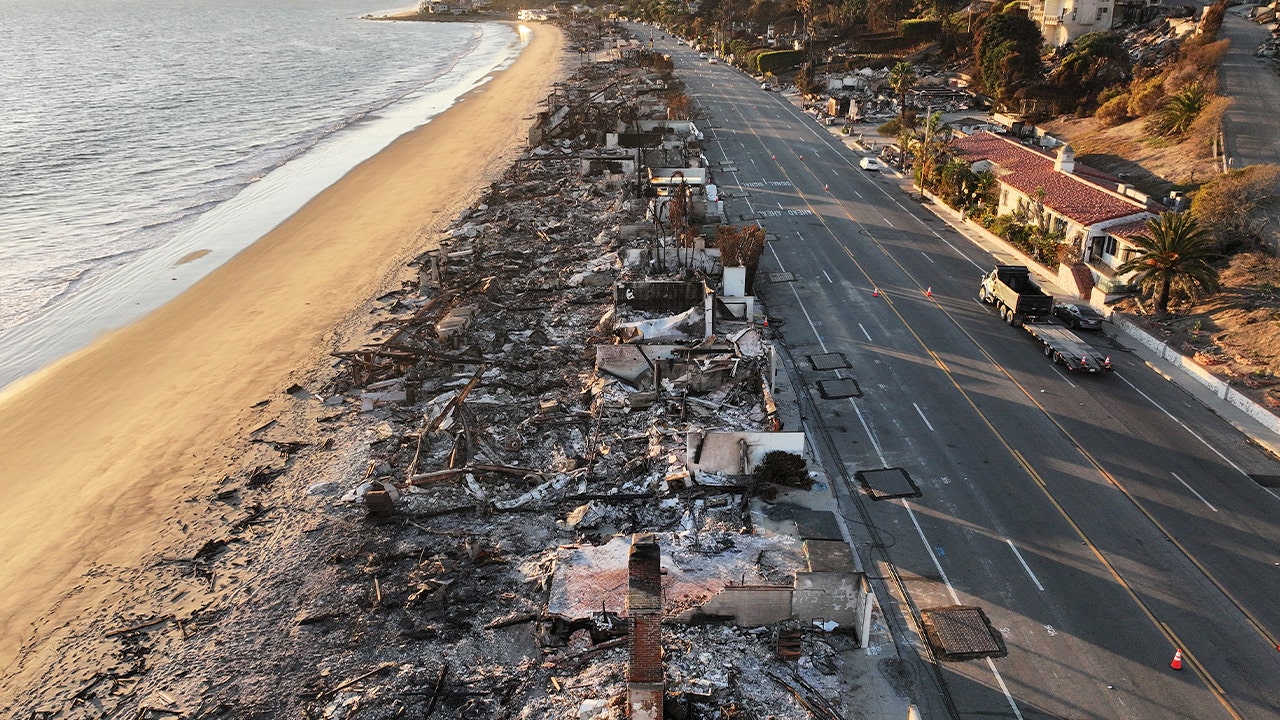Los Angeles Wildfires: Was an Empty Reservoir a Contributing Factor? The Shocking Truth!
The recent devastating wildfires in Los Angeles have left a trail of destruction, raising crucial questions about preparedness and resource management. One shocking revelation has ignited public outrage and a lawsuit: the Santa Ynez Reservoir, located near the epicenter of the Palisades Fire, was completely empty when the inferno struck. Could this have exacerbated the disaster? Let's delve into the details and explore the controversy surrounding this empty reservoir.
The Empty Reservoir: A Cost-Cutting Measure or a Critical Oversight?
The Santa Ynez Reservoir's emptiness has become the focal point of a lawsuit against the Los Angeles Department of Water and Power (LADWP). Accusations of cost-cutting measures delaying essential repairs are flying fast and furious. Critics argue that neglecting the reservoir, especially in a region prone to wildfires and extreme drought, amounts to a shocking level of negligence. The LADWP, however, claims the shutdown was necessary to comply with safe drinking water regulations, attributing the repair delays to the city's bureaucratic 'competitive bidding process'. This begs the question: Was the repair delay truly unavoidable, or was this just an example of cutting corners at the cost of public safety?
The LADWP's Defense: Climate Change and Shifting Priorities
The LADWP insists they had already exceeded minimum requirements for the Pacific Palisades water system. Their statement highlights the necessity of adapting to climate change and the potential need for reviewing current standards. However, this argument doesn't completely exonerate them. Many wonder if prioritizing water allocation for other needs, when faced with a severe drought, was the best approach considering the extreme wildfire risk. The lawsuit will likely probe the intricate details of decision-making and allocation of water resources, providing us with much-needed insights into the current water system capacity in fire-prone regions.
Could a Full Reservoir Have Made a Difference?
Experts remain divided on whether a full Santa Ynez Reservoir would have significantly altered the outcome of the wildfires. While water is vital for combating fires, the scale of this disaster could potentially dwarf even the fullest reservoirs' impact. Kathryn Sorensen, an experienced water management professional, expresses her doubts. She explains that the magnitude of the wildfire could have overwhelmed even a full Santa Ynez reservoir, highlighting the sheer power of nature's wrath.
A Matter of Degrees? Assessing the Potential Impact
While a full reservoir may not have changed the wildfire's overall course, a compelling argument suggests it might have made a difference in saving individual homes and businesses by providing a greater water supply in critical locations. Sorensen concedes that an increased water supply in the hillside areas could have potentially helped protect specific properties and created localized success stories during this inferno, even if the wildfire overwhelmed the city's firefighting capacity overall. Even if not the total solution, a filled Santa Ynez Reservoir may have provided extra assistance for those firefighting efforts on the frontlines, which may have made a bigger impact then first anticipated.
The Devastating Aftermath: Lessons Learned and Future Preparedness
The horrifying reality of the situation shows over 40,600 acres burned, over 12,300 structures destroyed, and at least 27 lives lost – and the final totals might climb as those still unaccounted for are sadly identified. This tragic event highlights the devastating effects of wildfires and the vital need for effective preparedness strategies in areas with high fire risks. The investigation will not only uncover details about resource management and preparedness, but also offer lessons learned that may reshape regulations and inform policy changes in the years to come.
Beyond the Reservoir: Systemic Issues to Tackle
This catastrophe brings more to light than just water resource allocation. It opens a bigger conversation about other factors in fire safety policies, infrastructure management, and the dire realities of climate change and how to effectively fight its damaging consequences on our everyday lives.
Take Away Points
- The empty Santa Ynez Reservoir has sparked a critical debate about resource management and wildfire preparedness.
- The LADWP’s explanation regarding safety regulations and cost-cutting measures is under scrutiny.
- Experts are divided about a full reservoir’s impact on the wildfire’s overall scale, though its importance on smaller, individual areas must not be understated.
- The devastating loss of life and property emphasizes the urgent need for comprehensive wildfire preparedness strategies, and a reevaluation of all possible resources used in protecting against wildfire.




